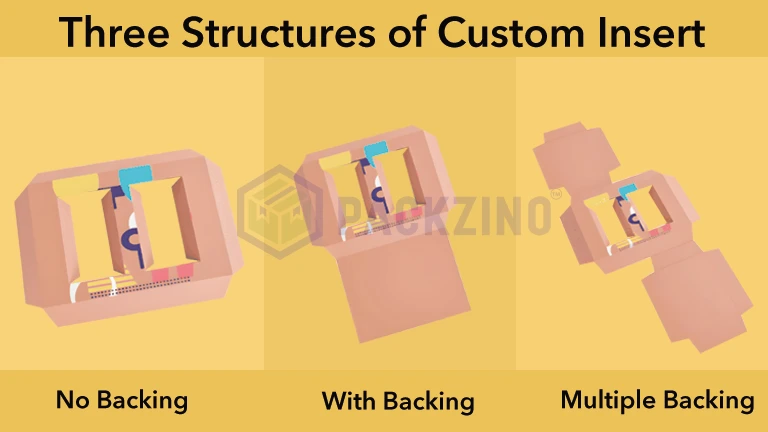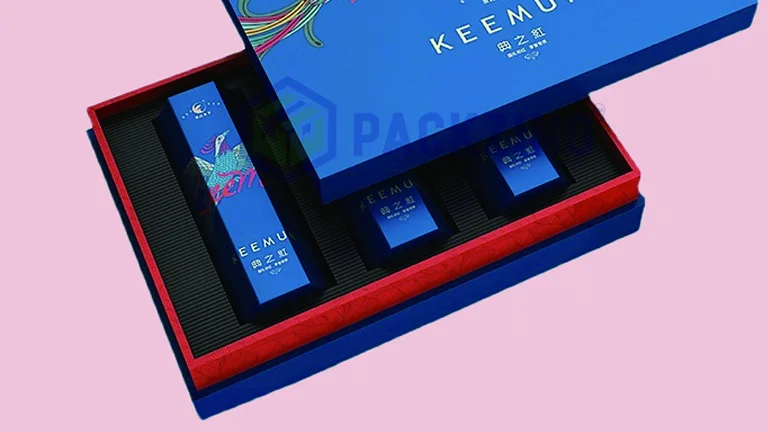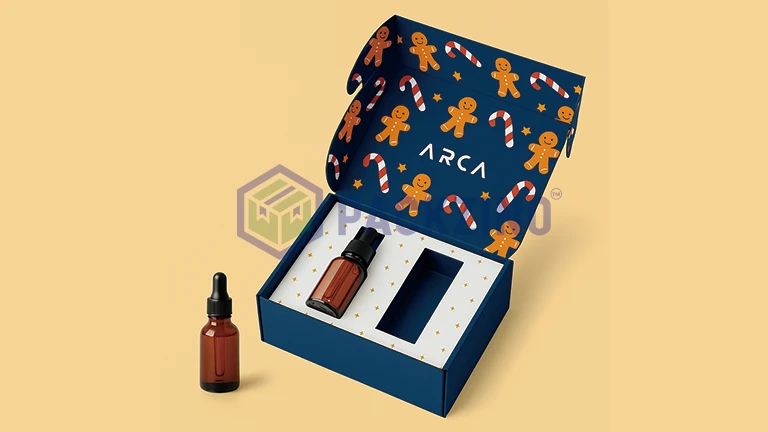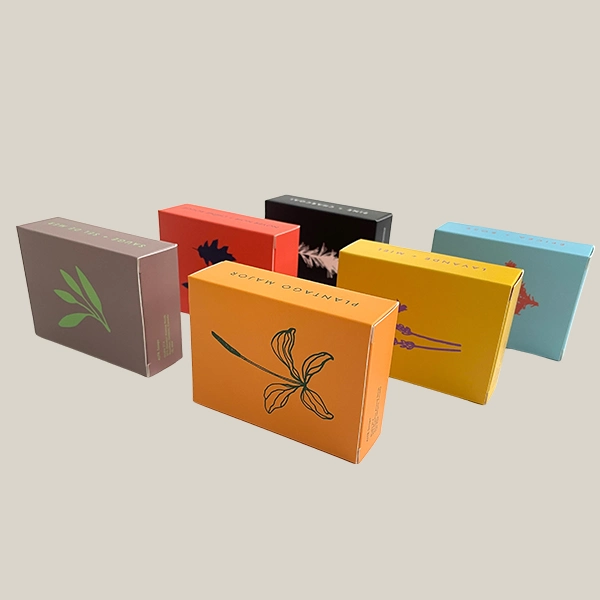Shipping damages, messy unboxing, and weak branding kill conversions. Custom box inserts 1 solve all these—here’s how they reshape e-commerce packaging.
Custom box inserts are protective components inside packaging boxes. They secure items, enhance unboxing, and reflect brand identity in e-commerce.
Wondering how to keep your products safe and your customers impressed? Continue reading below.
What exactly are custom box inserts and what problems do they solve?
Unsecure products in transit can break, hurt your brand, and raise return rates. Inserts fix this with smart structure and presentation.
Box inserts hold products in place during shipping. They prevent damage 2 and also boost the unboxing experience for e-commerce buyers.

Corrugated insert
Custom box inserts are structural parts placed inside your packaging to hold products in place. They keep items from shaking during transport and create a neat, premium feel when customers open the box.
Two Main Types of Inserts
| Insert Type | Function | Material Options |
|---|---|---|
| Protective Inserts | Prevent movement and breakage | Foam, Corrugated Board |
| Promotional Inserts | Encourage branding or repurchase | Paperboard, Printed Inserts |
For skincare brands, especially those shipping glass jars, inserts prevent damage and enhance unboxing. When Mark Chen sourced white paper boxes from Vietnam, breakage issues cost him his best retailer. After switching to PACKZINO’s foam-in-paperboard custom inserts, breakage dropped to zero and reorder rates rose.
Custom inserts don’t just hold products—they hold your customer's trust.
What structures do custom box inserts come in?
Products have different shapes and sizes. Inserts need to adapt. That’s why there are multiple structural types tailored to various needs.
Box insert structures include no backing, with backing, and multiple backing—each ideal for specific item arrangements or product sets.

Three insert structures
Insert structure defines how your products sit inside the box. Choosing the right layout is key to stability and presentation.
Types of Insert Structures
| Structure Type | Ideal For | Key Features |
|---|---|---|
| No Backing | Same-size items | Flat layout, simple tray holes |
| With Backing | Small or premium items | Raised compartments for security |
| Multiple Backing | Gift sets, skincare collections | Layered levels, tailored for variety |
From Concept to Conversion: The Power of Custom Skincare Gift Box Inserts
Mark Chen wanted a “limited edition 3” feel for his winter box. The set included a serum, cream, and rose quartz roller. We designed a multi-level paperboard insert lined with velvet, cut to fit each shape. With gold-foil printing on the top layer, the final look rivaled top-tier luxury brands. That season, his sales team reported a 40% increase in reorders compared to the previous year.
Structure isn’t just protection. It’s storytelling.
What materials are commonly used for box inserts?
Material choice affects not just protection but how premium your brand feels. Each option serves a unique purpose in look and function.
Box insert materials include corrugated cardboard, foam, molded pulp, paperboard, and plastic 4, each chosen for protection, appearance, or sustainability.

INSERT material
Choosing materials for your insert isn’t just about cost—it’s about matching your brand values and your product weight, fragility, and visual appeal.
Material Options and Uses
| Material Type | Application Examples | Pros | Eco-Friendly |
|---|---|---|---|
| Corrugated Cardboard | Electronics, food, books | Strong, cost-effective | ✅ |
| EVA/PU Foam | Cosmetics, glassware | Shock-absorbent, premium feel | ❌ |
| Molded Pulp | Bottles, eco brands | Biodegradable, protective | ✅ |
| Paperboard (300-400gsm) | Skincare, jewelry kits | Lightweight, printable | ✅ |
| Plastic | Tools, humidity-prone goods | Durable, water-resistant | ❌ |
Design Meets Performance
When Mark Chen asked for a packaging insert that looked premium but stayed under $0.60 per unit, we tested black EVA foam in a coated paperboard base. We used CMYK printing with a matte lamination for the box, and soy ink for sustainability. Not only did the packaging pass drop tests during shipping, but the client also received compliments from their retailers about the shelf appeal.
The right material builds quality from the inside out.
What are the top benefits of using custom box inserts?
From fewer broken items to more loyal customers, the payoff from using inserts is huge—and it touches every part of your business.
Box inserts reduce product damage, enhance unboxing experience, and promote brand identity, making them critical for e-commerce success.

Corrugated insert
Box inserts do much more than hold a product. They protect profits and create a brand experience that your customers remember—and talk about.
Key Business Benefits
1. Product Protection
Shipping can be rough. Studies show 11% of items arrive at distribution centers damaged 5. During holidays, returns can cost up to $32 billion, with 20–30% due to product damage 6. Inserts keep items from moving, reducing this risk dramatically. That means fewer returns, fewer complaints, and fewer headaches.
2. Aesthetic Impact
Unboxing is now a ritual. Customers film it, share it, and review it. If the inside of your box looks clean, elegant, and organized—your brand wins. A skincare brand we worked with recently saw a 25% spike in UGC (user-generated content) simply after switching to custom black foam inserts. That’s a free marketing win.
3. Brand Reinforcement
From logo prints to surprise samples, inserts turn packages into powerful branding tools. One of our clients includes a thank-you note and next-purchase discount tucked into a side pocket of their insert. Customers feel appreciated—and more likely to come back.
Inserts are not just filler. They’re strategy.
Mark’s Experience: Lower Returns, Better Margins
Before working with PACKZINO, Mark was using bubble wrap 7. Breakage rates hovered around 8%, and every complaint hit his margin. After switching to custom inserts with branding details, not only did damage rates fall, but his reorders from gift shops increased. “I used to sell packaging,” he said. “Now I sell a brand.”
Good inserts don’t cost money—they save and earn it.
Which products are best suited for box inserts?
Not all products need inserts—but some absolutely do. Here’s where inserts make the biggest difference in product safety and presentation.
Box inserts are ideal for fragile, small, luxury, or multi-piece products—especially in skincare, electronics, fashion, and food sectors.

print paperboard insert
Some industries rely on inserts more than others. Products that are fragile, expensive, or contain multiple pieces benefit most.
Recommended Insert Applications by Industry
| Product Type | Recommended Insert Type |
|---|---|
| Fragile Items | EVA foam or molded pulp |
| Small Jewelry | Velvet-lined paperboard compartments |
| Electronics | Corrugated trays with precise cutouts |
| Skincare Sets | Multi-layer paperboard + foam |
| Bottled Products | Cardboard cavities or velvet inserts |
| Books/Stationery | Slotted cardboard |
| Food Packs | Plastic or coated cardboard |
| Bags/Shoes | Corrugated base with fabric inserts |
| Fashion Accessories | Foldable, recyclable paperboard |
| Gift Sets | Accordion-style luxury trays |
Skincare Gift Set Packaging Ideas: The Power of Inserts and Gold Foil Branding
When working with a client from the Canadian skincare industry, we built an insert system that included both foam and printed paperboard layers. Each product had its own snug pocket, while the branding sat on top in gold foil. Customers not only received intact items but also posted glowing reviews about the packaging itself.
For products sold as sets or luxury gifts, inserts are non-negotiable. They add that final touch that says, “We care.”
Conclusion
Box inserts improve protection, wow unboxing moments, and build brands. Choose smart structures and right materials to maximize product value.
-
Explore how custom box inserts can enhance product safety and customer experience, boosting your e-commerce success. ↩
-
Explore various strategies to minimize product damage during transit, ensuring customer satisfaction and brand integrity. ↩
-
Exploring this resource will reveal how limited edition products can create exclusivity and drive sales, enhancing your marketing strategy. ↩
-
Learn the strengths and weaknesses of each insert material to choose the best one for your packaging needs ↩
-
See data on how common product damage is during shipping and why proper packaging matters ↩
-
Understand the financial impact of product returns during holidays and the role of packaging in preventing them ↩
-
Understand why bubble wrap can lead to higher damage rates and customer complaints in product shipping ↩



